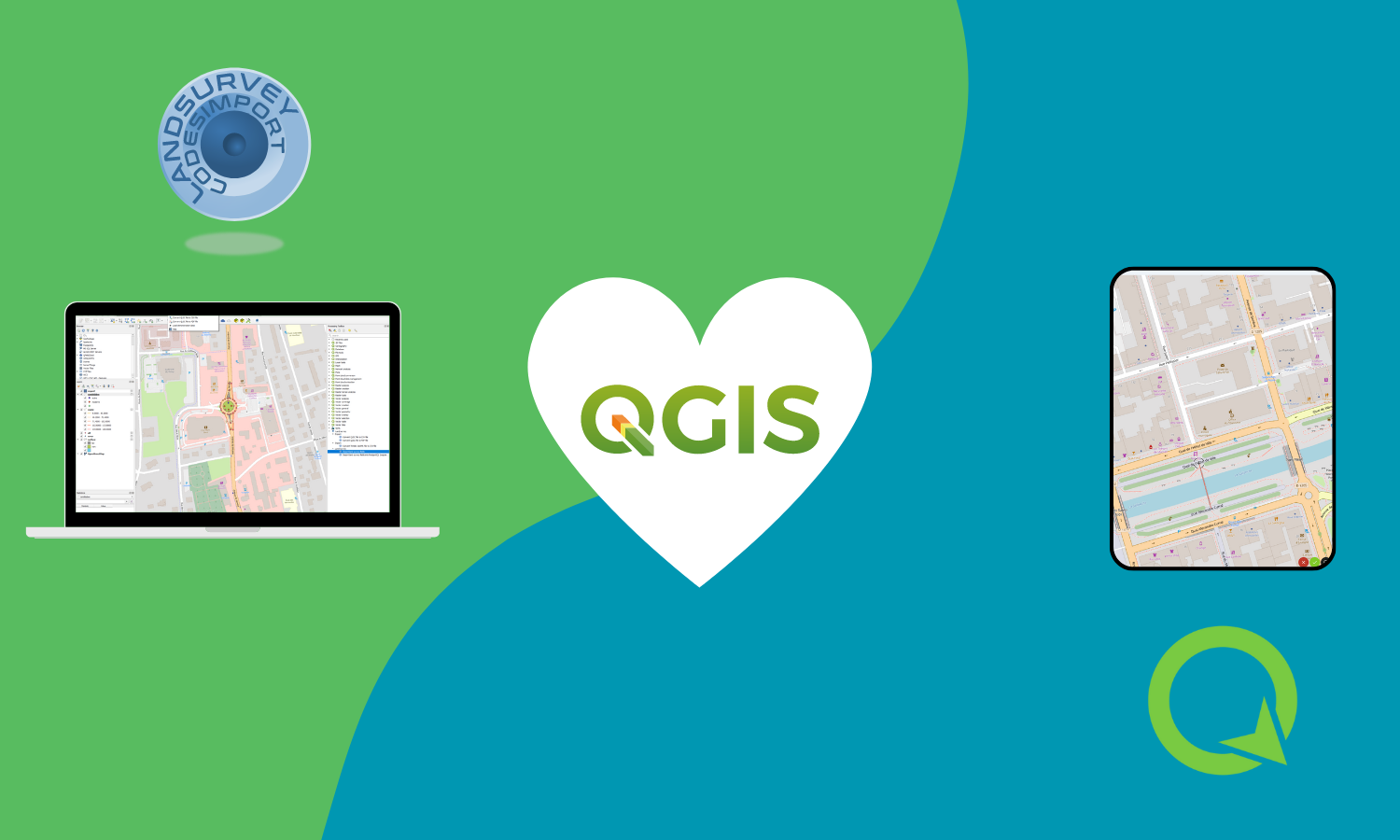
Introduction
At Oslandia, we offer services for network management, local authorities, and the production of simplified street body plans (PCRS). Among these, we provide assistance and development for field data collection solutions. In the previous post, we discussed these solutions. This article explains the differences between two collection solutions: QFIELD and LandSurveyCodesImport (LSCI). We are, at the same time, partners of OpenGIS.ch, the developer of QField, and the developers of LandSurveyCodesImport (LSCI). Why offer two tools?
QField: Direct Data Modification
QField is a mobile application developed around QGIS. Designed for intuitive field use, it allows users to:
- Modify GIS data in real-time: Surveys and modifications can be made directly in the field and immediately synchronized with the main database.
- Easy access to information: Users have direct access to maps and geospatial data, enabling quick and informed decision-making.
Use Cases of QField
- Environmental Mapping: Naturalists can use QField to record data on flora and fauna, instantly updating the database.
- Infrastructure Management: Utility technicians can record and modify infrastructure information directly in the field.
LandSurveyCodesImport (LSCI): Point and Code Entry for Surveyors
LandSurveyCodesImport (LSCI) is a QGIS plugin mainly intended for surveyors. It allows entry of points and codes from field notebooks, followed by processing and integration into QGIS. This process is particularly useful for:
- Structured data entry: Surveyors can record precise points and descriptive codes, facilitating subsequent data processing.
- Integration with traditional surveying tools: Compatible with total stations and GNSS devices, LSCI facilitates the transition of field data to GIS.
Use Cases of LSCI
- Urban Surveying: Survey teams can collect detailed data on urban structures and easily integrate them into QGIS for in-depth analysis.
- Geodesy and Cadastral Surveys: Surveyors can use LSCI to process topographic surveys and produce accurate 3D maps.
Integration with Other Tools
LSCI integrates into a suite of specialized tools:
- TotalOpenStation: Used for converting field notebooks into digital data.
- Topaze: Topometric calculation tool for detailed survey analysis.
Their combined use creates an efficient data processing chain to integrate GPS sensor data into the database.
Complementarity of Tools
Although QField and LSCI seem to address different needs, they can be used within the same department for comprehensive field data management. QField enables immediate and direct data updates, while LSCI offers a structured solution for topographic surveys.
Quality Control with QompliGIS
Finally, let’s not forget to check the data! For this, we recommend QompliGIS, a tool for GIS data quality control. It ensures that the produced data meets the required standards, guaranteeing the reliability and accuracy of geospatial information.
Conclusion
QField and LandSurveyCodesImport (LSCI) meet specific needs for field data entry. At Oslandia, we offer our expertise and development services to integrate these solutions into your processes and meet your specific requirements.
Do you want to integrate these tools into your information systems? Do you want to co-develop new features? Contact us!

![(Fr) [Témoignage client] Sylvain Petiteau, géologue expert en contrôle géologique chez Orano](https://oslandia.com/wp-content/uploads/2024/06/verbatim-sylvain-petiteau-v2.png)
